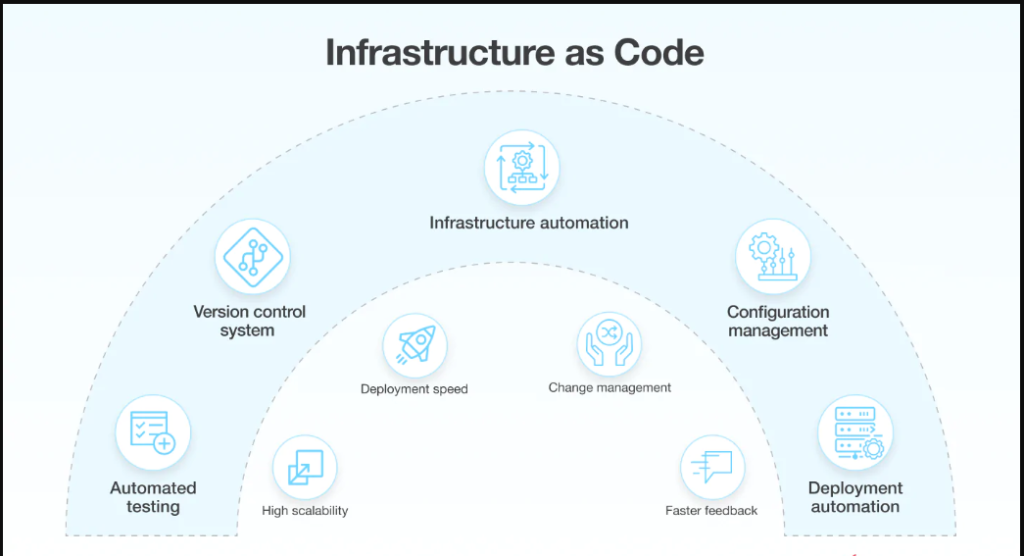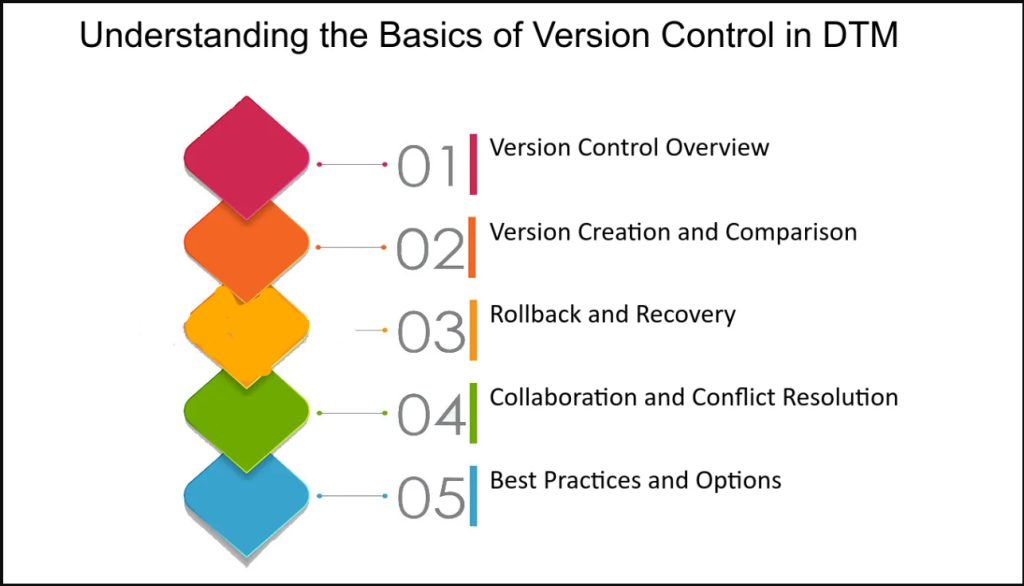
Here’s a comprehensive post titled “Why Every DevOps Team Should Adopt Infrastructure as Code” with expanded content:
The Role of Infrastructure as Code (IaC) in Modern DevOps
In today’s rapidly evolving technology landscape, DevOps teams are constantly seeking ways to improve the efficiency, scalability, and reliability of their infrastructure management. One of the most transformative practices in this regard is Infrastructure as Code (IaC). IaC allows teams to define, manage, and provision infrastructure using code, which brings the benefits of automation, consistency, and agility to infrastructure management. It empowers teams to treat infrastructure as software, allowing them to manage environments more effectively and reliably.
Adopting IaC is essential for modern DevOps teams because it supports continuous integration and delivery (CI/CD), enables better collaboration, and ensures the infrastructure is consistent and scalable. This post explores why every DevOps team should adopt Infrastructure as Code and highlights its major features.
Key Features of Infrastructure as Code
- Automation: Automates the provisioning and management of infrastructure, reducing manual intervention and human errors.
- Consistency: Ensures consistent environments across development, testing, and production.
- Scalability: Makes it easier to scale infrastructure by defining it in code and automating the deployment process.
- Version Control: Infrastructure changes are tracked in version control systems, offering traceability and easy rollback capabilities.
- Collaboration: Facilitates collaboration between developers, operations, and security teams, allowing for shared ownership of the infrastructure.
1. IaC Enables Faster and More Efficient Provisioning
Infrastructure provisioning is a critical aspect of any DevOps workflow. Traditional manual provisioning can be slow, error-prone, and lead to inconsistencies across environments. IaC solves these challenges by automating the entire provisioning process, allowing DevOps teams to quickly and efficiently deploy infrastructure resources.
Benefits of Faster Provisioning with IaC
- Reduced Deployment Time: Automates the setup of infrastructure resources, speeding up the deployment process and reducing the time needed to configure environments.
- Consistency Across Environments: IaC ensures that infrastructure is provisioned identically across all environments, from development to production, eliminating configuration discrepancies.
- Self-Service Capabilities: Developers and teams can provision their own environments without relying on manual intervention from operations teams, speeding up their workflows.
- Minimal Human Error: By automating provisioning, IaC reduces the risk of manual errors that can lead to configuration inconsistencies or failed deployments.
- Cloud-Native Flexibility: IaC tools integrate seamlessly with cloud providers (AWS, Azure, GCP), enabling teams to provision infrastructure on-demand and optimize resource usage.

2. IaC Promotes Version Control and Traceability
Infrastructure as Code ensures that all changes to the infrastructure are treated like code changes. This allows DevOps teams to use version control systems (VCS) such as Git to track changes, manage versions, and ensure traceability for infrastructure configurations.
Why Version Control is Crucial for IaC
- Change Tracking: Every change to infrastructure is tracked in version control, providing a detailed history of modifications made over time.
- Collaboration and Code Review: Teams can collaborate on infrastructure code using pull requests and peer reviews, ensuring that changes are vetted before deployment.
- Rollback Capability: If an infrastructure change introduces issues, it can be quickly rolled back to a previous version, minimizing downtime and ensuring system stability.
- Consistency in Environments: Using version control ensures that infrastructure is deployed consistently across multiple teams or projects.
- Auditability: Version-controlled infrastructure allows for easy auditing of changes, making it easier to adhere to security and compliance requirements.
3. Enhanced Scalability and Flexibility with IaC
As applications grow and requirements evolve, infrastructure must scale accordingly. IaC provides the tools and practices necessary to scale infrastructure resources efficiently, whether it’s provisioning additional servers, managing databases, or scaling microservices architectures.
How IaC Supports Scalability and Flexibility
- Automatic Scaling: IaC tools can automatically scale infrastructure based on demand, adjusting resources as needed without manual intervention.
- Resource Management: Teams can define resources in code, making it easier to manage and track them as part of the infrastructure.
- Elastic Infrastructure: IaC allows for elastic infrastructure, where resources can be dynamically provisioned or deprovisioned based on load, optimizing costs and performance.
- Cloud Integration: IaC works seamlessly with cloud platforms, allowing teams to quickly scale up or down in response to changing workloads or traffic spikes.
- Modular Infrastructure: IaC promotes modular infrastructure, enabling the reuse of code and the creation of templated environments that can be easily scaled or adapted for different purposes.
4. IaC Reduces Costs and Improves Resource Efficiency
One of the major benefits of Infrastructure as Code is its ability to optimize infrastructure usage and reduce costs. By automating resource provisioning, teams can ensure that resources are used efficiently, avoiding over-provisioning and underutilization.
Cost Reduction and Efficiency Gains with IaC
- Optimized Resource Allocation: IaC tools can be configured to ensure that resources are allocated efficiently, minimizing waste and reducing unnecessary expenditures.
- Automated Scaling: Automatically scaling infrastructure based on demand ensures that teams aren’t paying for unused resources during periods of low demand.
- Reduced Operational Costs: IaC reduces the manual effort required to manage infrastructure, freeing up resources for other value-added tasks.
- Cost Transparency: Version control and auditing tools provide visibility into infrastructure costs, helping teams to monitor and manage their budgets more effectively.
- Pay-As-You-Go Models: IaC integrates well with cloud providers’ pay-as-you-go pricing models, ensuring that teams only pay for the resources they use.
5. IaC Improves Collaboration Across Teams
Infrastructure as Code not only benefits individual DevOps teams but also fosters collaboration across development, operations, and security teams. By treating infrastructure as code, DevOps teams can work together in a more transparent and collaborative manner.
Benefits of Collaboration through IaC
- Unified Workflow: IaC creates a shared understanding of the infrastructure across all teams, eliminating silos between developers and operations staff.
- Shared Ownership: Developers can contribute to the infrastructure codebase, allowing them to take ownership of their environments and reducing the reliance on operations teams.
- Reduced Bottlenecks: By automating infrastructure management, IaC reduces the need for coordination between teams, leading to fewer bottlenecks and faster delivery cycles.
- Security Integration: Security teams can implement infrastructure security as code, ensuring that security practices are enforced across all environments and during every deployment.
- Feedback Loops: IaC provides faster feedback on changes, ensuring that any issues or improvements can be addressed quickly and collaboratively.
6. IaC Enhances Compliance and Security
For DevOps teams in regulated industries, ensuring that infrastructure adheres to security and compliance standards is essential. IaC allows teams to embed security, compliance, and governance policies directly into their infrastructure code, ensuring that all infrastructure deployments meet organizational and regulatory requirements.
Why IaC Is Essential for Security and Compliance
- Compliance as Code: Teams can define compliance requirements (e.g., GDPR, HIPAA) directly in the infrastructure code, ensuring that all deployments automatically comply with standards.
- Automated Security Checks: IaC tools can include automated security checks, preventing the deployment of insecure infrastructure configurations.
- Infrastructure Auditing: Version control and change tracking provide a comprehensive audit trail, ensuring transparency and traceability for compliance purposes.
- Consistent Security Practices: IaC ensures that security best practices are consistently applied across all environments, reducing the likelihood of misconfigurations or vulnerabilities.
- Security as a Shared Responsibility: Security becomes a shared responsibility among developers, operations, and security teams, fostering a proactive approach to infrastructure security.
The Imperative for DevOps Teams to Adopt IaC
Infrastructure as Code (IaC) is a foundational practice that enables DevOps teams to automate, scale, and manage infrastructure more effectively. It enhances consistency, reduces manual errors, promotes collaboration, and improves resource efficiency, all while enabling faster provisioning and deployment. With its ability to improve scalability, cost-efficiency, security, and compliance, IaC is a must-have for modern DevOps teams.
By adopting IaC, teams can achieve greater agility, reduce operational complexity, and deliver more reliable software and infrastructure. As organizations scale their operations and adopt more complex architectures, Infrastructure as Code will continue to be a critical enabler of DevOps success.
